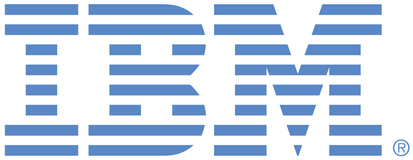
This portal is to open public enhancement requests against the products and services belonging to IBM Sustainability Software. To view all of your ideas submitted to IBM, create and manage groups of Ideas, or create an idea explicitly set to be either visible by all (public) or visible only to you and IBM (private), use the IBM Unified Ideas Portal (https://ideas.ibm.com).
Shape the future of IBM!
We invite you to shape the future of IBM, including product roadmaps, by submitting ideas that matter to you the most. Here's how it works:
Search existing ideas
Start by searching and reviewing ideas and requests to enhance a product or service. Take a look at ideas others have posted, and add a comment, vote, or subscribe to updates on them if they matter to you. If you can't find what you are looking for,
Post your ideas
Post an idea.
Get feedback from the IBM team and other customers to refine your idea.
Follow the idea through the IBM Ideas process.
Specific links you will want to bookmark for future use
Welcome to the IBM Ideas Portal (https://www.ibm.com/ideas) - Use this site to find out additional information and details about the IBM Ideas process and statuses.
IBM Unified Ideas Portal (https://ideas.ibm.com) - Use this site to view all of your ideas, create new ideas for any IBM product, or search for ideas across all of IBM.
ideasibm@us.ibm.com - Use this email to suggest enhancements to the Ideas process or request help from IBM for submitting your Ideas.

Hi, I wanted to re-open this idea as the eGRID factors have now been updated from the Fourth Assessment (AR4) to the Fifth Assessment (AR5) which Envizi has adopted. This illustrates my case in point that reporting across multiple years will have a mix between AR4 and AR5. As mentioned, reporting guidance recommends using the same GWPs for the current inventory period and the base year to maintain consistency across time and scopes. Reverse engineering is a practical solution and is utilized by other reporting platforms.
The GWP values used in in Envizi’s emission factors are dictated by the various reporting frameworks from which we source our factors.
Some factor sources provide factors in term of each of the 3 main gases (CO2, CH4 and N2O) in their unconverted form (eg. US EPA Climate leaders), while most other factor providers (eg. UK DEFRA, AU NGERS, NZ EPA, etc.) incorporate the preferred GWP values directly into emission factors they publish which means all gases are reported in CO2e.
Australia’s NGERs protocol adopted AR5 back in 2020 while UK DEFRA only adopted AR5 in 2023 and US EPA has finally adopted AR5 in their 2024 factors.
Reporting guidelines generally adopt the GWP values being used for global emissions reporting at that time. Best practice is to use the assessment report according to the reporting guidelines. This ensures that emissions reports by different organizations are comparable rather having different organizations adopting different assessment reports for their reporting.
The structure of Envizi’s factors follows the most common international approach where all factor information is recorded in CO2-equivalents. This means all managed factors are configured using a specific set of GWP values that cannot be changed based on client preferences.
If a client wishes to use GWPs from a different IPCC Assessment report (eg. AR6 instead of AR5) than the one used for any of our managed factors they can do so by creating and managing their own custom factors.
NOTE - For factor sets where the GWP values are incorporated directly into the published factors this would require reverse engineering values and re-applying alternate GWPs to create new factor information.
GWPs for Refrigerants and Synthetic Gases
Envizi does provide the option for clients to override the GWP used for refrigerants and synthetic gases by applying a specific assessment report set of factors (AR4, AR5, AR6) via a managed factor set (assuming they still have a free slot in their factor set selection hierarchy). If using the override approach for refrigerants the GWP values are applied for refrigerants regardless of time frame.